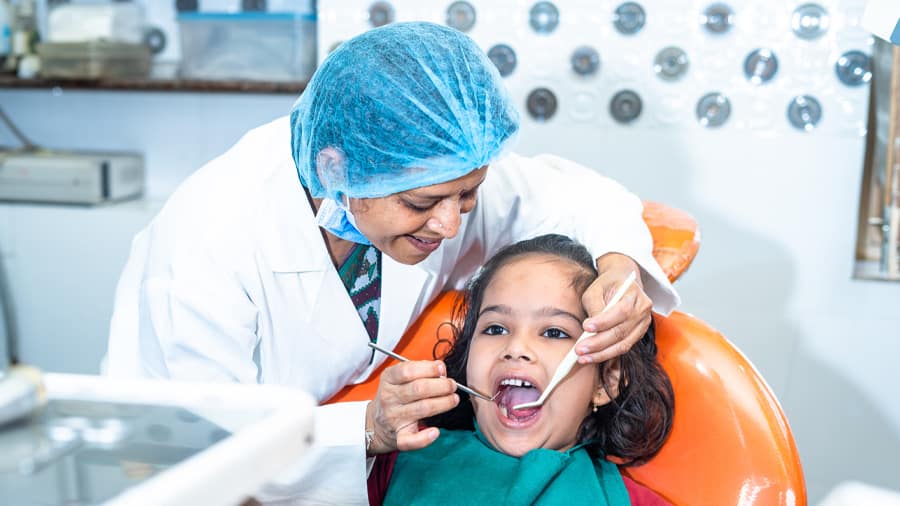Pediatric Dental Emergencies: What Moms And Dads Need to Know for Quick and Effective Therapy
In the world of pediatric healthcare, oral emergency situations can arise all of a sudden, leaving parents unsure of just how to deal with the situation properly. Comprehending the signs, sorts of injuries, and instant activities to take can make a considerable distinction in the result for a kid's dental health and wellness. With a fast and appropriate action, parents can mitigate potential long-lasting repercussions and guarantee their kid obtains the necessary treatment without delay. By being prepared and educated, moms and dads can play a critical duty in protecting their kid's dental wellness.
Indications of Pediatric Dental Emergencies
When assessing pediatric oral emergencies, it is crucial for moms and dads to be attentive for details signs showing possible significant problems. One of the primary signs of a dental emergency in kids is consistent tooth pain that is not reduced by non-prescription discomfort medicines.

Usual Kinds of Oral Injuries
Typical types of oral injuries in kids typically result from accidents or sports-related tasks that can cause different forms of injury to the mouth and teeth. One typical dental injury is a broken tooth, which can vary from a minor chip to an extra extreme break entailing the inner layers of the tooth. An additional frequent injury is a knocked-out tooth, where immediate activity is important to enhance the opportunities of conserving the tooth. Children might additionally experience oral injuries like tooth intrusion, where the tooth is pressed into the jawbone, or avulsion, which is the full displacement of a this link tooth from its socket. Furthermore, dental injuries can consist of luxation, where the tooth is dislodged yet not totally knocked senseless, or soft cells injuries to the gums, lips, or tongue. It is vital for parents to be knowledgeable about these typical kinds of dental injuries to provide timely and suitable treatment in situation of emergency situations.
Immediate First Aid Actions
Upon encountering a pediatric dental emergency, swift and appropriate first aid steps are important to ease discomfort and stop additional difficulties. For a knocked-out tooth, instruct the child to gently wash the tooth with water, attempting not to touch the origin, and location it back in the socket if possible. If re-implantation is not possible, store the tooth in a container of milk or the child's saliva till getting to the dentist.
When to Look For Expert Help
Seeking punctual oral care from a pediatric specialist is critical in resolving possible complications arising from pediatric oral emergencies. Parents need to look for professional help quickly if their youngster experiences extreme tooth discomfort, facial swelling, hemorrhaging that does not stop, a knocked-out long-term tooth, or any injury to the mouth or face. These indications indicate a major dental problem that needs immediate attention from a pediatric dental practitioner.
In addition, if a child suffers persistent tooth sensitivity to warm or cold, trouble eating or ingesting, or signs of infection such as pus around the gum tissues, parents must not postpone in seeking professional oral care. These signs could suggest underlying oral problems that require to be resolved immediately to avoid more problems.
In situations of oral emergencies, it is vital for moms and dads to contact a pediatric dental expert as quickly as feasible to make certain appropriate medical diagnosis and therapy - children dentist. Delaying expert assistance can bring about exacerbated oral concerns and prolonged pain for the youngster

Stopping Future Dental Emergency Situations
To decrease the chance of future dental emergency situations, parents should focus on click here to read constant oral health practices and routine visits to a pediatric dentist for preventive treatment. Encouraging kids to brush their teeth twice a day with fluoride tooth paste and instructing them the correct method for two mins each time can substantially decrease the danger of oral issues. Flossing day-to-day is likewise important to get rid of plaque and food particles in between teeth, where a tooth brush can not reach. Furthermore, limiting sweet snacks and drinks can help advice stop tooth decay and dental caries.
Normal sees to a pediatric dental practitioner for examinations and cleansings are vital for early discovery of any type of possible oral issues. These visits allow the dental practitioner to monitor the child's dental health, provide expert cleanings to remove plaque and tartar build-up, use fluoride therapies for included security, and offer advice on appropriate oral treatment methods.
Conclusion
In verdict, parents should know the signs of pediatric oral emergencies, common kinds of dental injuries, prompt emergency treatment actions, and when to look for specialist assistance. By taking positive actions to avoid future dental emergency situations, parents can ensure fast and reliable therapy for their youngsters. It is essential to remain notified and prepared in order to manage any kind of oral emergency situation that might arise.